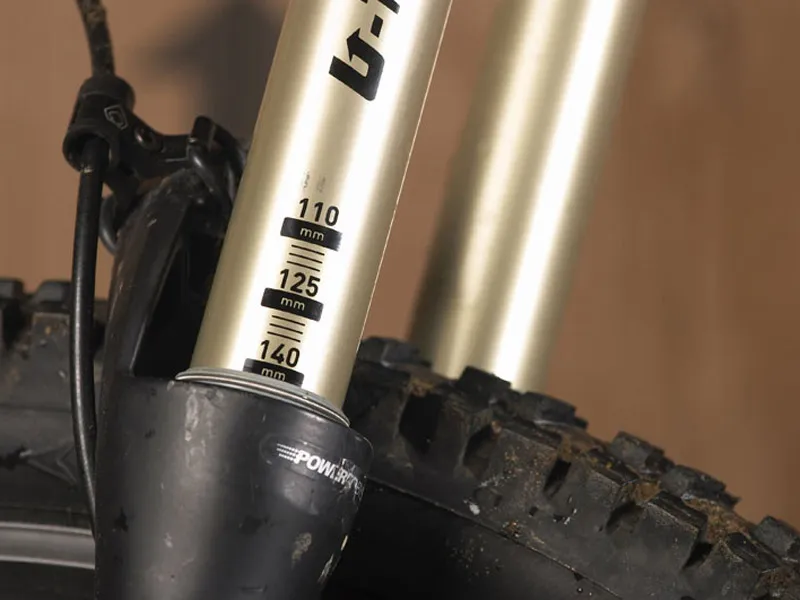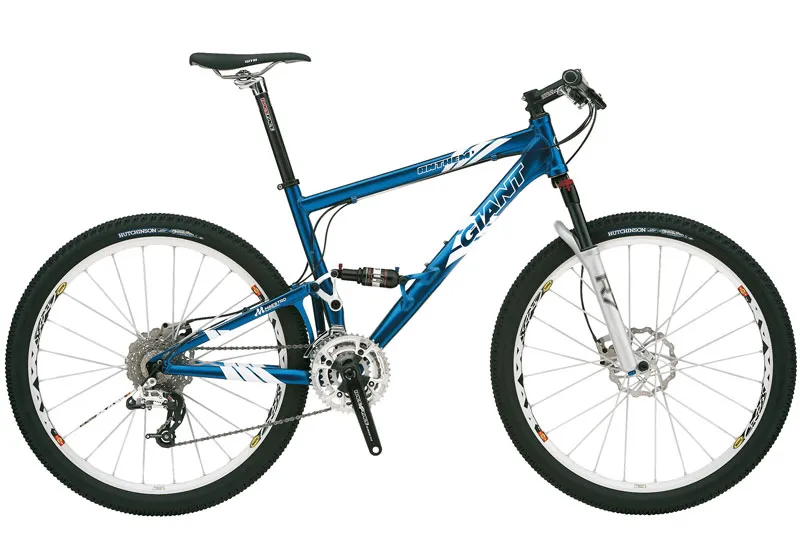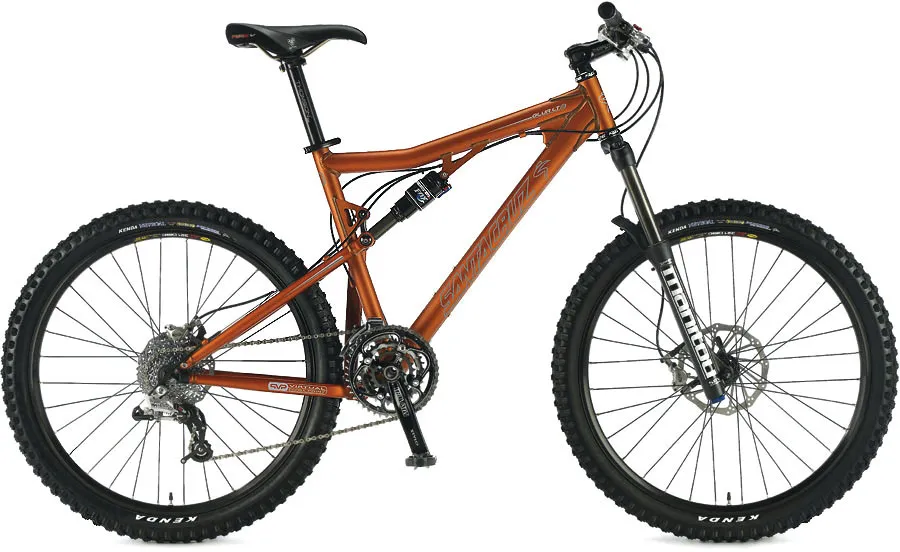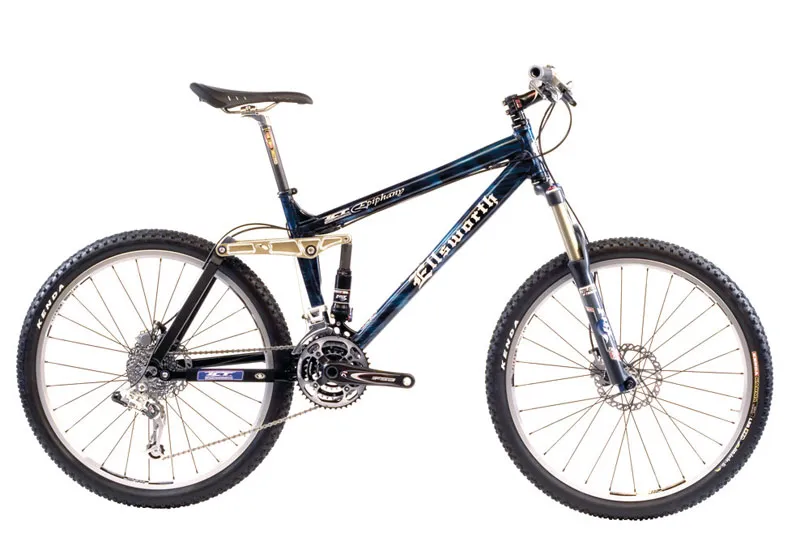What you really need to know about suspension travel. You don't always need six inches to have fun y'know.
With so many options in terms of inches of travel, different suspension systems and very different ride characters, which suspension will suit your sort of riding best? The most common way to categorise suspension is in terms of 'travel' - the maximum vertical movement of the wheel from the top to bottom of its shock stroke. It's not foolproof (we'll go into that later) but it'll help you work out how many inches you need for the type of MTBing you do, and handily you can group front suspension hardtail and full suss together in most categories.
3 inch travel
Three XC Three inches of suspension movement isn't much when it comes to big landings off drops or riding over rocks. Generally the frames and forks are too light to handle any abuse too, so it's your skill keeping you out of trouble.
It'll be enough to keep your wheels gripping, your pedalling smooth and you comfortable over ruts, roots, small rocks and general off-road rough stuff. Short travel full suspension can also be kept very light (sub 24lb) so it's ideal for racing.
4 inch travel
Four all With four inches (100mm) of suspension you're still going to be looking after the bike over anything scary on the trails, but it'll be a lot smoother than a 3in travel bike the rest of the time.
There's not enough suspension movement to really disturb handling when braking or pedalling either, and the whole bike will generally feel crisp and agile. Reasonably light weights (approx 26lb) make them good efficient all day and all rounder bikes too. There are some really heavy duty 4in rear to 6in travel fork slalom race or jump bikes (Blur 4X, Transition Preston) around as well giving big impact survival with XC agility.
5 inch travel
Five Alive There's a whole breed of 5in (125mm) forks and bikes that are barely heavier (approx 27-28lb) than 4in travel bikes but ride noticeably smoother over big rocks, small drops, and steps etc. Good five inchers still pedal really well so they can make great day or 'all mountain' bikes too.
This much suspension movement means a lot of unwanted movement if the basic angles or set up are wrong though so there's more learning to do than on 4in bikes. 5in bikes range from leggy but still fragile and haughty XC race bikes to compact but super stable, laid back freeride style bikes too, so take your time choosing.
6&7 inch travel
At sixes & sevens Things really get confusing around the 6in and 7in mark. Some bikes are lightweight XC machines that can gallop for miles and climb just about okay, but get nervous or vague in technical terrain, or at higher downhill speeds. Others are so strong and confident downhill you could race on them, but are too heavy and mushy feeling to make any sort of climbing enjoyable. Then there are a huge number of bikes somewhere in between. The best of them cover either extreme XC or DH depending what parts you fit to them, while the worst don't really do either very well.
Six inches of suspension can also dive, bounce and wobble all over the place over rough singletrack unless you get the front/rear shocks set up exactly. Weights well over 30lb (unless you spend mega bucks) and long forks mean that XC performance will always be compromised. 8in up to 10in travel bikes are not uncommon now, and at home on DH courses or extreme freeride drops.
Handling
As important as the travel of a bike is its basic handling character. At the short travel end you'll mostly get long top tubed, low lying bikes with steep (71 degree) head angles. These are designed to give competition-ready sharp steering and plenty of chest room for racers/climbers to breathe. However, a long fork compresses so far under braking that these angles would become dangerously nervous and they also make the bike less stable at higher speeds. Therefore longer travel bikes generally run head angles around 69 degrees or slacker, although steep seat angles are still useful to keep some weight on the front wheel. Bottom brackets are also raised to give more ground clearance over trail trouble as the suspension sinks, long travel bikes are generally shorter so you can shift your weight from one end to the other more easily in technical terrain. This reduces breathing space on climbs, so work out what your priorities are before drawing up a shortlist.
Collar & cuffs
One big misconception is that a bike has to be totally matched in terms of amount of travel - or even shock brand - front and rear. Given that long forked hardtails ride so well then that's obviously not true, and we've ridden some great bikes with 6in forks and 4in back ends or vice versa. What you do need is a bike that suits your style. A soft, long travel rear end will suit a rider who just likes to lean back and let the bike flow. A plusher, longer fork will suit someone who really likes to push the bike aggressively through technical sections. It's worth noting that while we regularly play with various fork travel options on the test bikes we ride, if the bike has adjustable rear travel too, we nearly always just stick it in the longest setting and leave it there.
Practicalities
Finally, whatever suspension or handling the bike offers, never forget the basics. Does it come in a size and shape that fits you really well? Has it got enough room for the tyres you like even when coated in mud? Is there enough room to straddle the top tube? If you carry your bike a lot is it comfortable over your shoulder? What reputation for longevity have the shock and bearings got? Are they easy to adjust and maintain? Do you want cutting edge technology or something that's had the bugs ironed out over a few years?Whatever the latest two-wheeled trend the shop staff try and talk you into, think about the way you use your bike and make a list of key criteria before you go shopping. >





